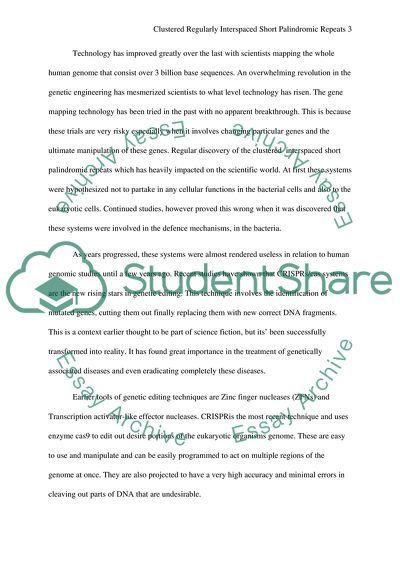Cite this document
(Clustered Regularly Interspaced Palindromic Repeats Essay Example | Topics and Well Written Essays - 2500 words, n.d.)
Clustered Regularly Interspaced Palindromic Repeats Essay Example | Topics and Well Written Essays - 2500 words. https://studentshare.org/biology/1817780-ethics
Clustered Regularly Interspaced Palindromic Repeats Essay Example | Topics and Well Written Essays - 2500 words. https://studentshare.org/biology/1817780-ethics
(Clustered Regularly Interspaced Palindromic Repeats Essay Example | Topics and Well Written Essays - 2500 Words)
Clustered Regularly Interspaced Palindromic Repeats Essay Example | Topics and Well Written Essays - 2500 Words. https://studentshare.org/biology/1817780-ethics.
Clustered Regularly Interspaced Palindromic Repeats Essay Example | Topics and Well Written Essays - 2500 Words. https://studentshare.org/biology/1817780-ethics.
“Clustered Regularly Interspaced Palindromic Repeats Essay Example | Topics and Well Written Essays - 2500 Words”. https://studentshare.org/biology/1817780-ethics.


